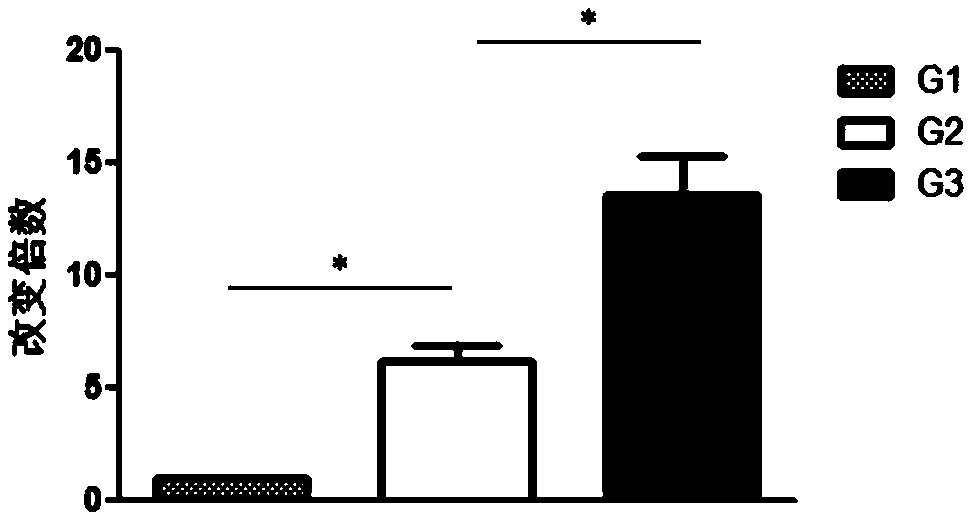Marker related to malignant degree of oral squamous cell carcinoma and application thereof
A squamous cell carcinoma, malignant technology, applied in the field of biomedicine, can solve the problems of reduced quality of life, facial appearance, etc.
- Summary
- Abstract
- Description
- Claims
- Application Information
AI Technical Summary
Problems solved by technology
Method used
Image
Examples
Embodiment 1
[0040] Example 1 Screening of molecular markers associated with malignancy of oral squamous cell carcinoma
[0041] 1. Clinical research objects:
[0042] Selected 15 cases of oral squamous cell carcinoma resected by maxillofacial surgery in the hospital (all patients were not treated with preoperative radiotherapy and chemotherapy), including 6 cases of well-differentiated (grade III, G3), moderately differentiated (grade II, G2) ) in 4 patients and 5 patients with poorly differentiated (grade I, G1) patients (diagnosed by two experienced pathologists who determined the pathological grade of all cancer tissues).
[0043] 2. Tissue RNA extraction
[0044] (1) Tissue grinding: First, put a small amount of liquid nitrogen into a mortar, put about 100 mg of the prepared tissue into it, take out the tissue stored in the -80 degree ultra-low temperature refrigerator, put it in the mortar and add a small amount of liquid Nitrogen, add liquid nitrogen while grinding to prevent liqu...
Embodiment 2
[0071]Example 2 QPCR verifies the relationship between candidate genes and the malignancy of oral squamous cell carcinoma
[0072] Based on the results of the previous high-throughput sequencing, according to the size of the P value, we selected the SIX4 gene for verification.
[0073] 1. Research objects:
[0074] Selected 90 cases of oral squamous cell carcinoma resected by maxillofacial surgery in the hospital's department of stomatology (all patients were not treated with preoperative radiotherapy and chemotherapy), including 30 patients with high differentiation (G3), 30 patients with moderate differentiation (G2), and 30 patients with low differentiation (G2). There were 30 differentiated (G1) patients (diagnosed by two experienced pathologists who determined the pathological grade of all cancer tissues).
[0075] 2. RNA extraction and detection
[0076] Follow the method of Example 1.
[0077] 3. Reverse transcription
[0078] cDNA was synthesized by reverse transcr...
PUM
 Login to View More
Login to View More Abstract
Description
Claims
Application Information
 Login to View More
Login to View More - R&D
- Intellectual Property
- Life Sciences
- Materials
- Tech Scout
- Unparalleled Data Quality
- Higher Quality Content
- 60% Fewer Hallucinations
Browse by: Latest US Patents, China's latest patents, Technical Efficacy Thesaurus, Application Domain, Technology Topic, Popular Technical Reports.
© 2025 PatSnap. All rights reserved.Legal|Privacy policy|Modern Slavery Act Transparency Statement|Sitemap|About US| Contact US: help@patsnap.com

